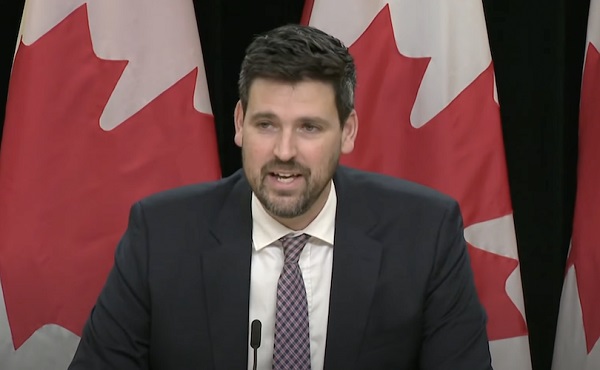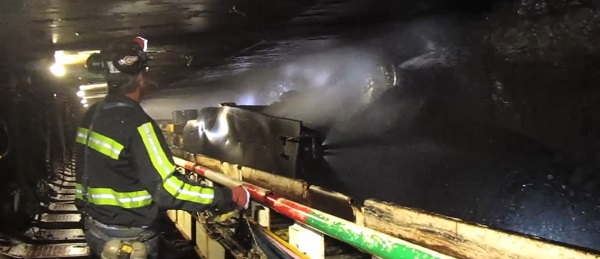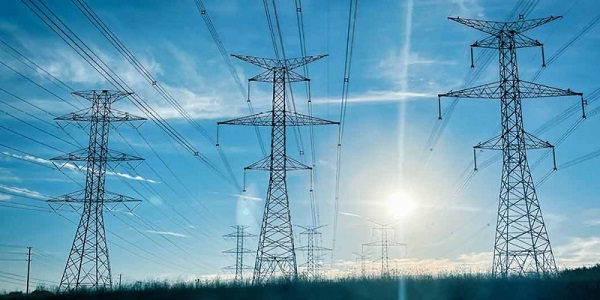Canadian Energy Centre
Canada remains on the sidelines as global competitors double down on energy projects

By Deborah Jaremko of the Canadian Energy Centre
From the Taliban to Russia, billions in oil and gas investment underway around the world
As Canada’s oil and gas industry faces the uncertainty of a looming emissions cap and a “Just Transition,” billions of dollars of investment is underway in other countries to grow oil and gas supply for the future.
Here’s just a handful of examples.
Afghanistan – Amu Darya basin
US$690 million
Xinjiang Central Asia Petroleum and Gas Co.

Afghan Deputy PM Mullah Abdul Ghani Baradar at a news conference in Kabul announcing an oil development agreement with Xinjiang Central Asia Petroleum and Gas Co. Photo: Twitter/Zabihullah Mujahid
In January, Chinese state-owned Xinjiang Central Asia Petroleum and Gas Co. signed a deal with the Taliban-controlled Afghanistan government to invest nearly US$700 million over four years on oil development in the country’s north.
The 25-year contract also involves building Afghanistan’s first oil refinery.
The Taliban militant group returned to power in Afghanistan after the withdrawal of U.S. forces in 2021. Its ownership share of the oil project will gradually rise to 75 per cent, according to spokesman Zabihullah Mujahid.
The Taliban maintains close ties with the terrorist group al-Qaeda, according to the Council on Foreign Relations (CFR). Since resuming its rule in Afghanistan, authorities have resumed public floggings and executions, violently cracked down on protesters and activists, “obliterated” women’s rights, and “enforced prohibitions on behavior deemed un-Islamic,” the CFR says.
Brazil – Santos Basin
TotalEnergies
US$1 billion

Map courtesy TotalEnergies
France-based TotalEnergies announced in January it will go ahead with a US$1 billion expansion of oil production offshore Brazil.
The development is located about 300 kilometres off the coast in the Santos Basin. TotalEnergies, which has operated in Brazil for more than 40 years, is 45 per cent owner along with partners Shell, Repsol and Sinopec.
The project will consist of three new deepwater wells connected to an existing floating production and storage vessel. It is expected to increase production to 60,000 barrels per day in 2025, up from about 35,000 barrels per day today.
Norway – Norwegian Continental Shelf
Aker BP
US$29 billion

Rendering courtesy Aker BP
Oslo, Norway-based Aker BP and its partners filed formal plans in December for four offshore oil and gas projects on the Norwegian Continental Shelf.
A total investment of nearly US$30 billion, the developments are expected to increase Aker BP’s oil and gas production to around 525,000 barrels per day in 2028, compared to 400,000 in 2022.
The company’s strategy is to meet the world’s growing need for energy while simultaneously contributing to reducing emissions, said CEO Karl Johnny Hersvik.
The projects are enabled by a 2020 government stimulus package that “allowed oil companies to embark upon new commitments,” he said.
Qatar – North Field East LNG expansion
Qatar Energy
US$29 billion

Qatar’s Minister of State for Energy Affairs and QatarEnergy CEO Saad Sherida al-Kaabi (R) and TotalEnergies CEO Patrick Pouyanne announce partnership in the giant North Field East LNG project at the QatarEnergy headquarters in Doha on June 12, 2022. Getty Images photo
One of the world’s largest LNG exporters is expanding its capacity with the largest LNG project ever built.
State-owned QatarEnergy’s US$29 billion North Field East Expansion will increase the country’s LNG export capacity to 110 million tonnes per year, from 77 million tonnes per year. Startup is expected in late 2024.
A planned second phase of the project will further increase capacity to 126 million tonnes per year. QatarEnergy’s partners include Shell, TotalEnergies, Exxon Mobil, ConocoPhillips and Eni.
World LNG demand reached a record 409 million tonnes in 2022, according to data provider Revintiv. It’s expected to rise to over 700 million tonnes by 2040, according to Shell’s most recent industry outlook.
Russia – Vostok Oil
Rosneft
US$170 billion

Russian President Vladimir Putin and executives with state oil company Rosneft present a major shipbuilding complex to Indian Prime Minister Narendra Modi. India will be an investor in a new US$170 billion oil project in the Russian Arctic. Photograph courtesy Rosneft
Despite the war in Ukraine and wide-ranging energy sanctions, Russian state-owned oil company Rosneft says work continues to advance on schedule for the massive Vostok oil project.
The US$170 billion project will use the Northern Sea Route to export about 600,000 barrels per day by 2024. Production is expected to increase to two million barrels per day after the second phase.
Rosneft reports that as of mid-2022, more than 1,000 units of special construction equipment are in operation, as well as seven new Russian arctic class drilling rigs, with another five on the way. Over 4,000 people and 2,000 vehicles have been mobilized.
“This means that the project lives and develops as planned, the inevitable difficulties are being overcome, but we have full confidence that all the tasks will be completed,” Rosneft CEO Igor Sechin said.
“In the context of decreasing investment in the oil and gas sector, Vostok Oil is the only project in the world capable to provide a stabilizing effect on the hydrocarbon markets.”
From the Canadian Energy Centre Ltd.
Canadian Energy Centre
Report: Oil sands, Montney growth key to meet rising world energy demand

Cenovus Energy’s Sunrise oil sands project in northern Alberta
From the Canadian Energy Centre
By Will Gibson
‘Canada continues to be resource-rich and competes very well against major U.S. resource bases’
Alberta
The Alberta energy transition you haven’t heard about

From the Canadian Energy Centre
Horizontal drilling technology and more investment in oil production have fundamentally changed the industry
There’s extensive discussion today about energy transition and transformation. Its primary focus is a transition from fossil fuels to lower-carbon energy sources.
But in Alberta, a fundamental but different energy transition has already taken place, and its ripple effects stretch into businesses and communities across the province.
The shift has affected the full spectrum of oil and gas activity: where production happens, how it’s done, who does it and what type of energy is produced.
Oil and gas development in Alberta today largely happens in different places and uses different technologies than 20 years ago. As a result, the companies that support activity and the communities where operations happen have had to change.
Regional Shift
For the first decade of this century, in terms of numbers of wells, most drilling activity happened in central and southeast Alberta, with companies primarily using vertical wells to target conventional shallow natural gas deposits.
In 2005, producers drilled more than 8,000 natural gas wells in these areas, according to Alberta Energy Regulator (AER) records.
But then, three things happened. The price of natural gas declined, the price of oil went up and new horizontal drilling technology unlocked vast energy resources that were previously uneconomic to produce.
By 2015, the amount of natural gas wells companies drilled in central and southeast Alberta was just 256. In 2023, the number dropped to only 50. Over approximately 20 years, activity dropped by 99 per cent.
Where did the investment capital go? The oil sands and heavy oil reserves of Alberta’s northeast and shale plays, including the Montney and Duvernay, in the province’s foothills and northwest.
Nearly 60 per cent of activity outside of the oil-rich northeast occurred in central and southeast Alberta in 2005. By 2023, overall oil and gas drilling in those regions had dropped by 30 per cent, while at the same time increasing by 159 per cent in the foothills and northwest.
“The migration of activity from central and southern Alberta to other regions of the province has been significant,” says David Yager, a longtime oil and gas service company executive who now works as a special advisor to Alberta Premier Danielle Smith.
“For decades there were vibrant oil service communities in places like Medicine Hat, Taber, Brooks, Drumheller and Red Deer,” he says.
“These [oil service communities] have contracted materially with the new service centres growing in places like Lloydminster, Bonnyville, Rocky Mountain House, Edson, Whitecourt, Fox Creek and Grande Prairie.”
Fewer Wells and Fewer Rigs
Extended-reach horizontal drilling compared to shallow, vertical drilling enables more oil and gas production from fewer wells.
Outside the oil sands, in 2005, producers in Alberta drilled 17,300 wells. In 2023, that dropped to just 3,700 wells, according to AER data.
Despite that massive nearly 80 per cent decrease in wells drilled, total production of oil, natural gas and natural gas liquids outside of the oil sands is essentially the same today as it was in 2005.
Last year, non-oil sands production was 3.1 million barrels of oil equivalent (boe) per day, compared to 3.4 million boe per day in 2005–but from about 13,600 fewer new wells.
Innovation from drilling and energy services companies has been a major factor in achieving these impressive results, says Mark Scholz, CEO of the Canadian Association of Energy Contractors. But there’s been a downside.
Yager notes that much of the drilling and service equipment employed on conventional oil and gas development is not suited for unconventional resource exploitation.
Scholz says the productivity improvements resulted in an oversupply of rigs, especially rigs with limited depth ratings and limited capability for “pad” drilling, where multiple wells are drilled the same area on the surface.
Rigs have been required to drill significantly deeper wellbores than in the traditional shallow gas market, he says.
“This has resulted in rig decommissioning or relocations and a tactical effort to upgrade engines, mud pumps, walking systems and pipe-handling technology to meet evolving customer demands,” he says.
“You need not go beyond the reductions in Canada’s drilling rig fleet to understand the impact of these operational innovations. Twenty years ago, there were 950 drilling rigs; today, we have 350, a 65 per cent reduction. [And] further contractions are likely in the near term.”
Scholz says, “collaboration and partnerships between producers and contractors were necessary to make this transition successful, but the rig fleet has evolved into a much deeper, technologically advanced fleet.”
A Higher Cost of Entry
Yager says that along with growth in the oil sands, replacing thousands of new vertical shallow gas wells with fewer, high-volume extended-reach horizontal wells has made it more challenging for smaller companies to participate.
“The barriers to entry in terms of capital required have changed tremendously. At one time a new shallow gas well could be drilled and put on stream for $150,000. Today’s wells in unconventional plays cost from $3 million to $8 million each,” he says.
“This has materially changed the exploration and production companies developing the resource, and the type of oilfield services equipment employed. An industry that was once dominated by multiple smaller players is increasingly consolidating into fewer, larger entities. This has unintended consequences that are not well understood by the public.”
More Oil (Sands), Less Gas
Higher oil prices and horizontal drilling helped change Alberta from a natural gas hotbed to a global oil powerhouse.
In the oil sands, horizontal wells enabled a key technology called steam assisted gravity drainage (SAGD), which went into commercial service in 2001 to allow for a massive expansion of what is referred to as in situ oil sands production.
In 2005, mining dominated oil sands production, at about 625,000 barrels per day compared to 440,000 barrels per day from in situ projects. In situ oil sands production exceeded mining for the first time in 2013, at 1.1 million barrels per day compared to 975,000 barrels per day from mining.
Today the oil sands production split is nearly half and half. Last year, in situ projects–primarily SAGD–produced approximately 1.8 million barrels per day, compared to about 1.7 million barrels per day from mining.
Natural gas used to exceed oil production in Alberta. In 2005, natural gas provided 54 per cent of the province’s total oil and gas supply. Nearly two decades later, oil accounts for 60 per cent compared to 29 per cent from natural gas. The remaining approximately 11 per cent of production is natural gas liquids like propane, butane and ethane.
Alberta’s non-renewable resource revenue reflects the shift in activity to more oil sands and less natural gas.
In 2005, Alberta received $8.4 billion in natural gas royalties and $950 million from the oil sands. In 2023, the oil sands led by a wide margin, providing $16.9 billion in royalties compared to $3.6 billion from natural gas.
Innovation and Emerging Resources
As Alberta’s oil and gas industry continues to evolve, another shift is happening as investments increase into emissions reduction technologies like carbon capture and storage (CCS) and emerging resources.
Since 2015, CCS projects in Alberta have safely stored more than 14 million tonnes of CO2 that would have otherwise been emitted to the atmosphere. And more CCS capacity is being developed.
Construction is underway on an $8.9-billion new net-zero plant producing polyethylene, the world’s most widely used plastic, that will capture and store CO2 emissions using the Alberta Carbon Trunk Line hub. Two additional CCS projects got the green light to proceed this summer.
Meanwhile, in 2023, producers spent $700 million on emerging resources including hydrogen, geothermal energy, helium and lithium. That’s more than double the $230 million invested in 2020, the first year the AER collected the data.
“Energy service contractors are on the frontlines of Canada’s energy evolution, helping develop new subsurface commodities such as lithium, heat from geothermal and helium,” Scholz says.
“The next level of innovation will be on the emission reduction front, and we see breakthroughs in electrification, batteries, bi-fuel engines and fuel-switching,” he says.
“The same level of collaboration between service providers and operators that we saw in our productivity improvement is required to achieve similar results with emission reduction technologies.”
-

 illegal immigration2 days ago
illegal immigration2 days agoDelusional Rumour Driving Some Migrants in Mexico to Reach US Border
-

 conflict1 day ago
conflict1 day agoTrump has started negotiations to end the war in Ukraine
-

 Housing1 day ago
Housing1 day agoTrudeau loses another cabinet member as Housing Minister Sean Fraser resigns
-

 Energy2 days ago
Energy2 days agoDig, Baby, Dig: Making Coal Great Again. A Convincing Case for Coal
-

 Business2 days ago
Business2 days agoFiscal update reveals extent of federal government mismanagement
-

 Economy1 day ago
Economy1 day agoThe White Pill: Big Government Can Be Defeated (Just Ask the Soviet Union)
-

 Business2 days ago
Business2 days ago‘There Are No Sacred Cows’: Charles Payne Predicts DOGE Will Take Bite Out Of Military Industrial Complex
-

 Brownstone Institute1 day ago
Brownstone Institute1 day agoA Potpourri of the World’s Unexposed Scandals






